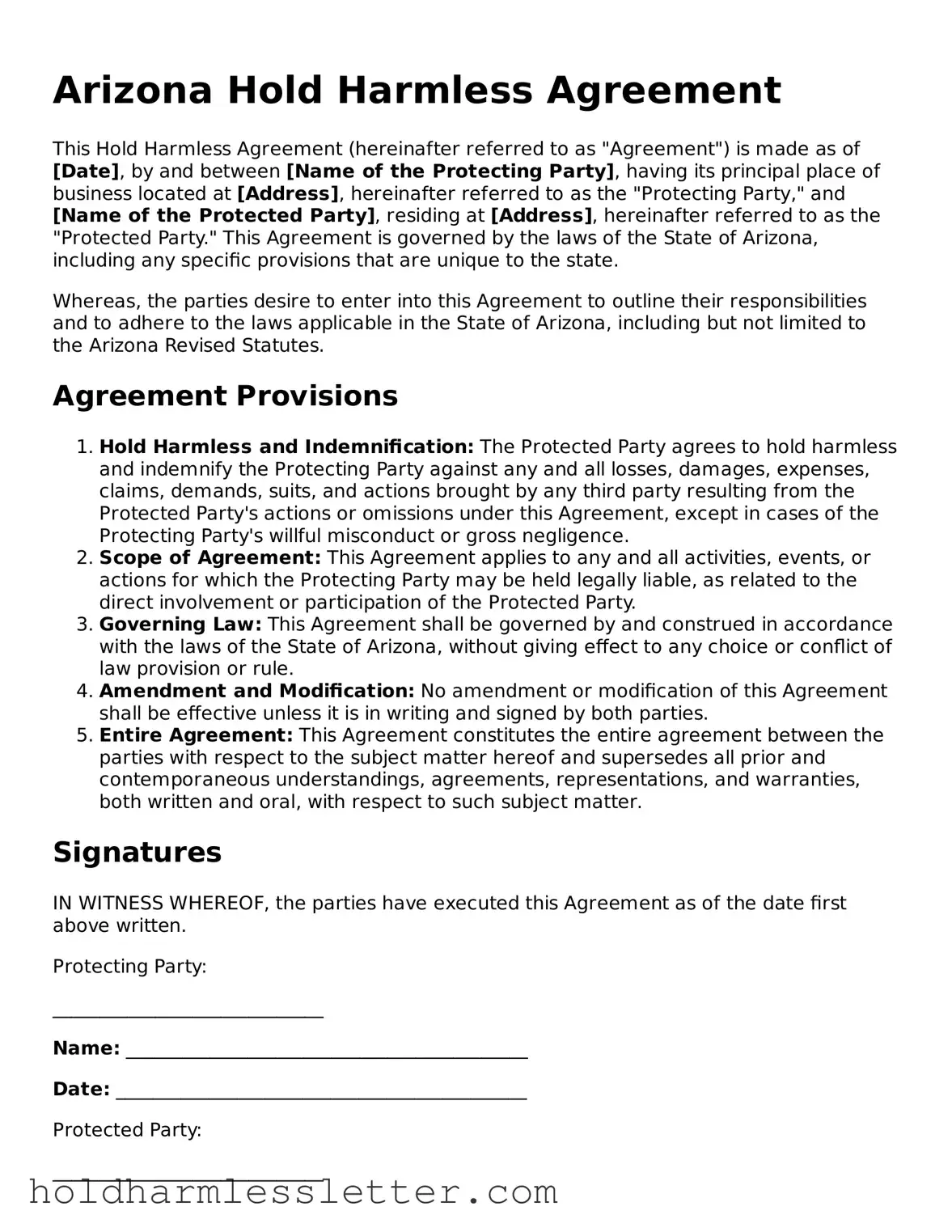What is a Hold Harmless Agreement form in Arizona?
A Hold Harmless Agreement form in Arizona is a legal document that one party uses to protect themselves from liability for any injuries or damages that may occur to another party in the course of a specified activity. It essentially means that one party agrees not to hold the other responsible for any risks, including personal injury or property damage, that might occur.
Who needs to use a Hold Harmless Agreement in Arizona?
Individuals or organizations in Arizona that engage in activities that carry a degree of risk may need to use a Hold Harmless Agreement. This includes contractors, service providers, property owners, event organizers, and businesses that invite the public onto their premises. It's especially useful in activities such as recreational sports, construction projects, or special events.
Is a Hold Harmless Agreement legally binding in Arizona?
Yes, a Hold Harmless Agreement is legally binding in Arizona, provided it is well-drafted, clear, and entered into freely by both parties. It must also not violate any state laws or public policy. To ensure enforceability, it's crucial that the agreement is specific about the scope of protection and the responsibilities of all involved parties.
Can I write my own Hold Harmless Agreement in Arizona, or do I need a lawyer?
While you can technically write your own Hold Harmless Agreement in Arizona, it is strongly recommended that you consult with a lawyer. This is to ensure that the agreement complies with all relevant laws and is drafted in a way that adequately protects your interests. A lawyer can also advise you on any specific provisions that should be included based on the nature of the activity or transaction.
What should be included in a Hold Harmless Agreement?
A comprehensive Hold Harmless Agreement should include the names of all parties involved, a description of the activity or transaction, a detailed explanation of the risks assumed, the scope of the protection provided, any exceptions to the agreement, and the effective dates. It should also include a signature from all parties, signifying their understanding and agreement.
How long does a Hold Harmless Agreement last in Arizona?
The duration of a Hold Harmless Agreement in Arizona can vary depending on what the parties agree upon. It may be for a specific event or activity, or it might cover a longer term for ongoing services or activities. The agreement should specify the effective dates, including both the start date and an expiration date if applicable.
Can a minor sign a Hold Harmless Agreement in Arizona?
Generally, minors (individuals under 18 years of age) do not have the legal capacity to enter into contracts, including a Hold Harmless Agreement, in Arizona. Any agreement signed by a minor can be considered voidable. Therefore, a parent or legal guardian should sign the agreement on behalf of the minor to ensure it is enforceable.
